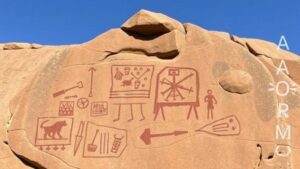How to Create a Personal Brand as a Treasure Hunter to Attract Buyers
How to Create a Personal Brand as a Treasure Hunter to Attract Buyers
In a world driven by online presence and individual narratives, treasure hunters must navigate the intricate route of personal branding to connect with potential buyers. Building a personal brand not only enhances visibility but also fosters trust and facilitates relationships within the treasure hunting community. This article delves into the essential steps for establishing a distinctive and attractive personal brand as a treasure hunter.
Understanding Personal Branding
Personal branding refers to the intentional creation of a unique public persona to differentiate oneself from competitors. For treasure hunters, personal branding involves showcasing expertise, authenticity, and the rare treasures one unearths. It operates on the principle that buyers are likely to engage with familiar and trustworthy individuals. As noted by a study from LinkedIn, 70% of people feel more favorable towards a brand when the individual behind it engages transparently.
Defining Your Niche
A crucial first step in crafting a personal brand is to identify your specific niche within the treasure hunting domain. This may include:
- Metal detecting in historical sites
- Underwater treasure hunting
- Antique restoration and sales
- Urban exploration for lost artifacts
Consider the example of Mike Scadron, a renowned metal detector enthusiast who has carved out a niche in finding and restoring ancient coins. By focusing on this specific area, he has built a loyal following, showcasing his expertise and growing his buyer base effectively.
Showcasing Your Expertise
Once you have identified your niche, it is vital to demonstrate your expertise. This can be achieved through various channels:
- Blogging: Share insights, experiences, and tips related to your treasure hunting adventures.
- Social Media: Use platforms like Instagram and YouTube to showcase your finds and engage with your audience through tutorials and live streams.
- Workshops and Events: Conduct workshops or participate in treasure hunting events to connect directly with enthusiasts and potential buyers.
For example, YouTube creators like “Aqua Chigger” have harnessed the power of visual storytelling. Through detailed videos demonstrating his underwater finds, he not only illustrates his skills but also creates an emotional connection with viewers, leading to increased buyer interest.
Building a Trustworthy Online Presence
A strong online presence is pivotal in establishing credibility. Effective strategies include:
- Website Development: Create a professional website that serves as the central hub for your brand. Include a portfolio of your finds and testimonials from satisfied buyers.
- Consistent Branding: Use a consistent tone, logo, and visual style across all platforms to reinforce brand recognition.
- Transparent Communication: Engage with your audience by promptly responding to queries and sharing your journey candidly.
Consider the case of Treasure Hunter “Aerial Adventure” which uses its website as an aggregator of valuable resources, shares customer reviews, and maintains a consistent theme that encapsulates adventure and excitement.
Networking Within the Treasure Hunting Community
Building relationships with fellow treasure hunters, collectors, and buyers is essential in expanding your reach. Networking can be executed through:
- Participating in online forums and communities like TreasureNet or various Facebook groups dedicated to treasure hunting.
- Attending conventions or local meetups to establish face-to-face connections.
- Collaborating with other treasure hunters or influencers in the niche through co-hosted events or video collaborations.
For example, treasure hunter “The Relic Recoverist” frequently collaborates with other enthusiasts to broaden their audience, resulting in increased visibility and sales.
Leveraging Customer Feedback
Testimonials and reviews play a crucial role in shaping your reputation. Encouraging satisfied customers to leave positive feedback creates social proof that attracts new buyers. You can implement this by:
- Including a review section on your website.
- Sharing positive feedback on your social media accounts.
- Engaging with reviewers personally to show appreciation and foster loyalty.
A notable example is how sellers on Etsy frequently utilize buyer feedback to showcase their exceptional service and unique finds, which cultivates buyer trust.
Creating Engaging Content
Content marketing is another powerful tool for personal branding. Engaging content can take many forms, such as:
- Videos: Tutorials, treasure hunting techniques, or recounting heartwarming stories of significant discoveries.
- Podcasts: Discussions on recent finds, best practices, or interviewing experts in the treasure hunting community.
- Newsletters: Regular updates with tips, market trends, and exclusive offers can keep your audience engaged and informed.
The treasure hunting YouTube channel “Finding America” utilizes compelling storytelling combined with instructional content, effectively captivating and educating their audience.
Conclusion and Actionable Takeaways
Creating a personal brand as a treasure hunter is a multifaceted process that requires dedication, creativity, and strategic thinking. By following these guidelines, you can effectively position yourself to attract buyers and elevate your treasure hunting endeavors:
- Identify and define your niche to stand out in the treasure hunting community.
- Showcase your expertise through various content formats and platforms.
- Build a trustworthy online presence and engage consistently with your audience.
- Network tirelessly within the community to expand your reach and credibility.
- Capitalize on customer feedback to enhance your reputation and attract new buyers.
By implementing these strategies, you will not only attract customers but also foster a loyal community around your treasure hunting brand, ensuring long-term success.

